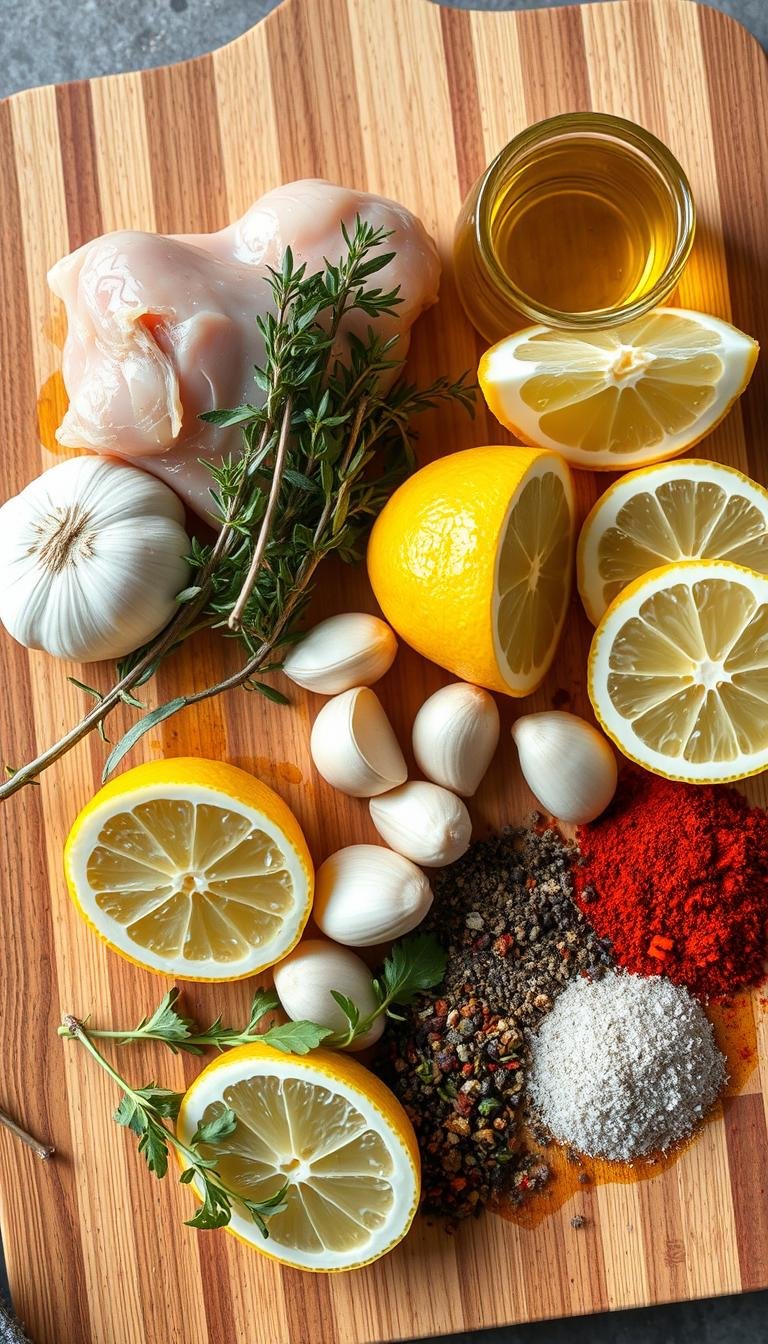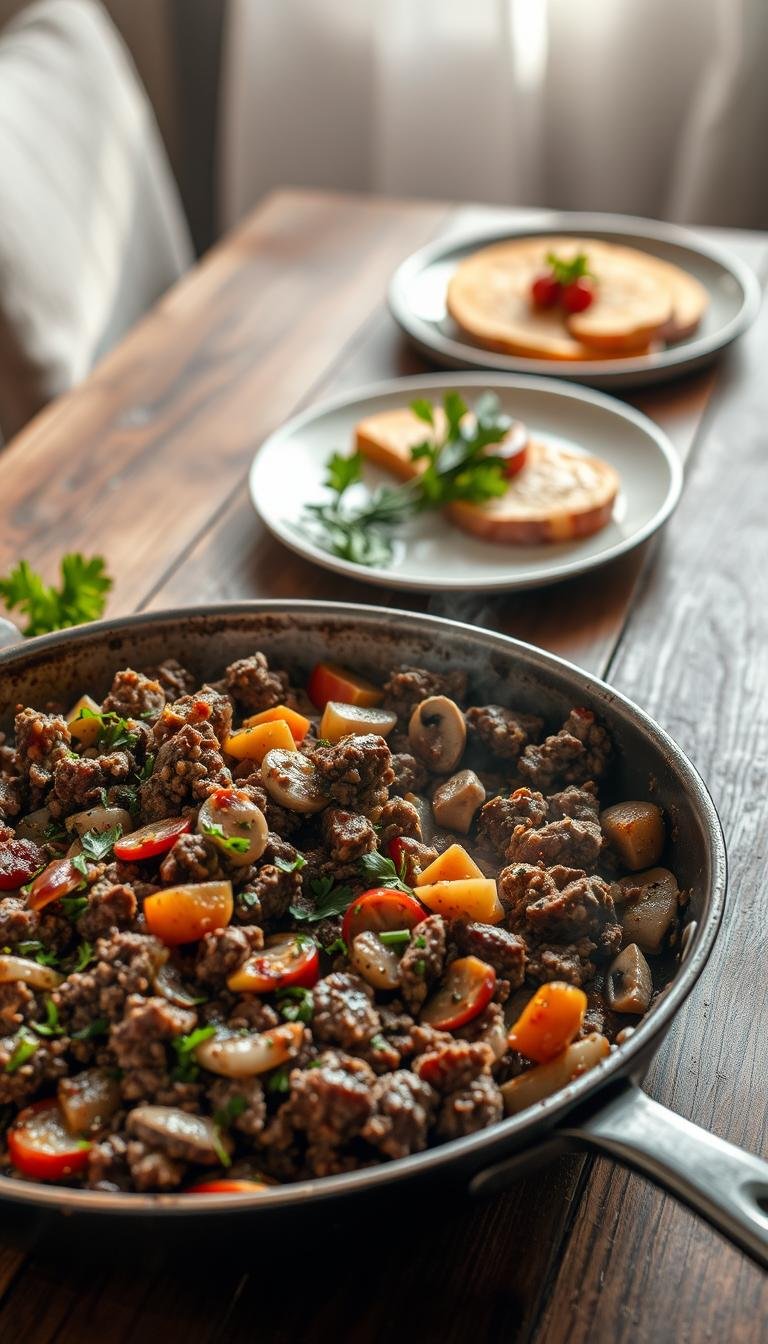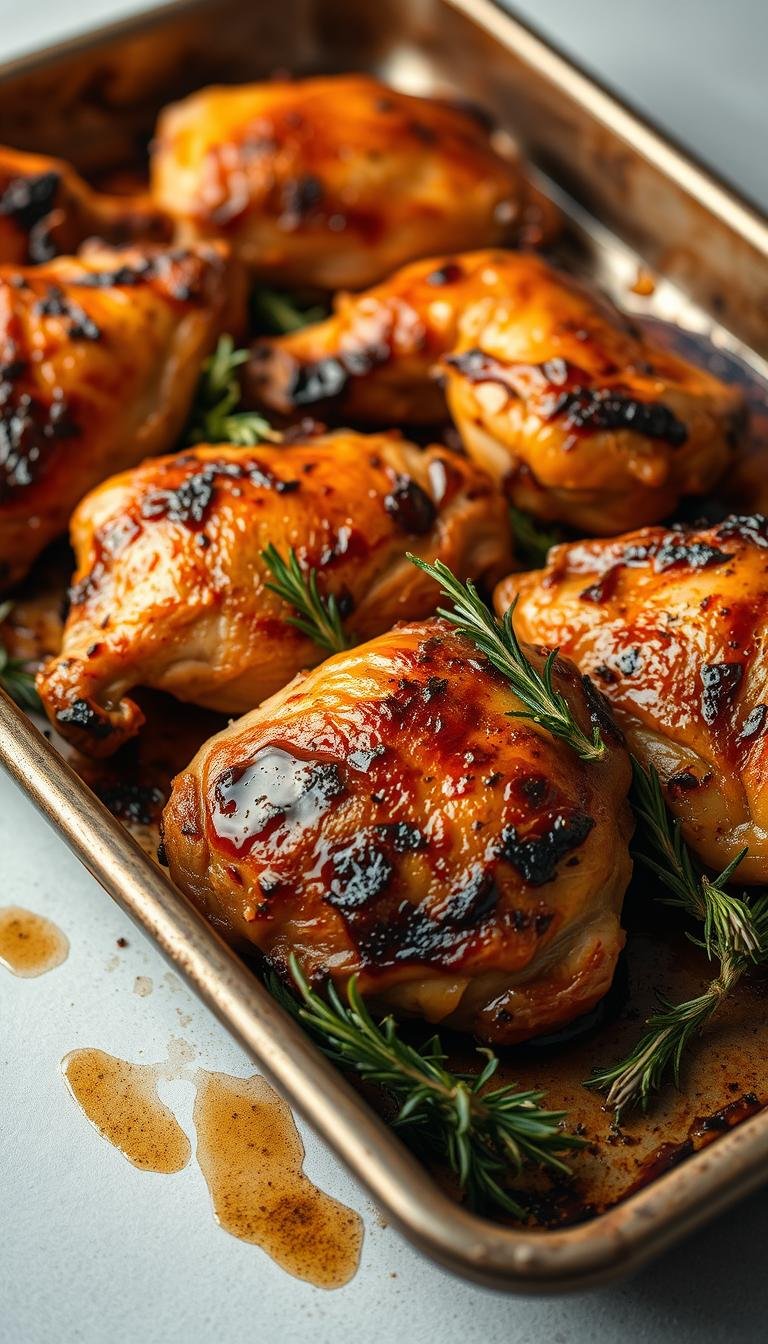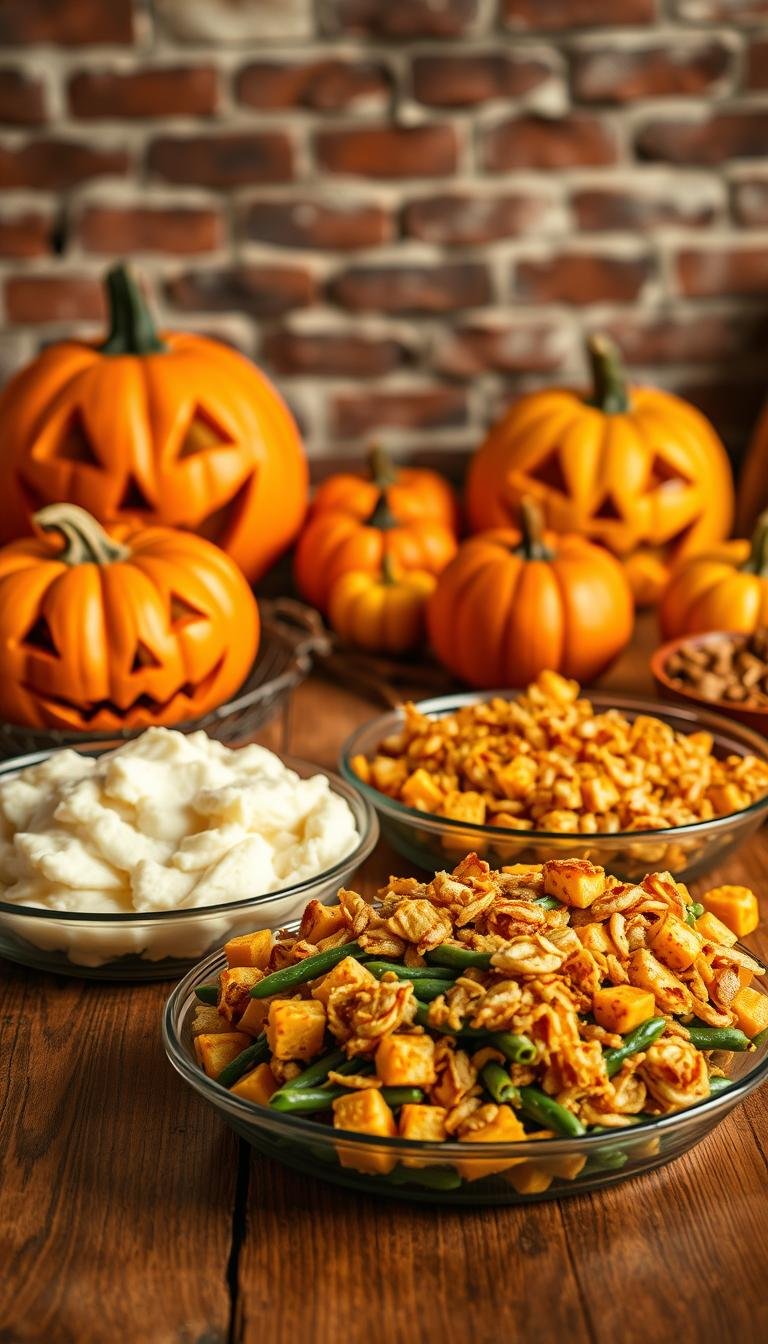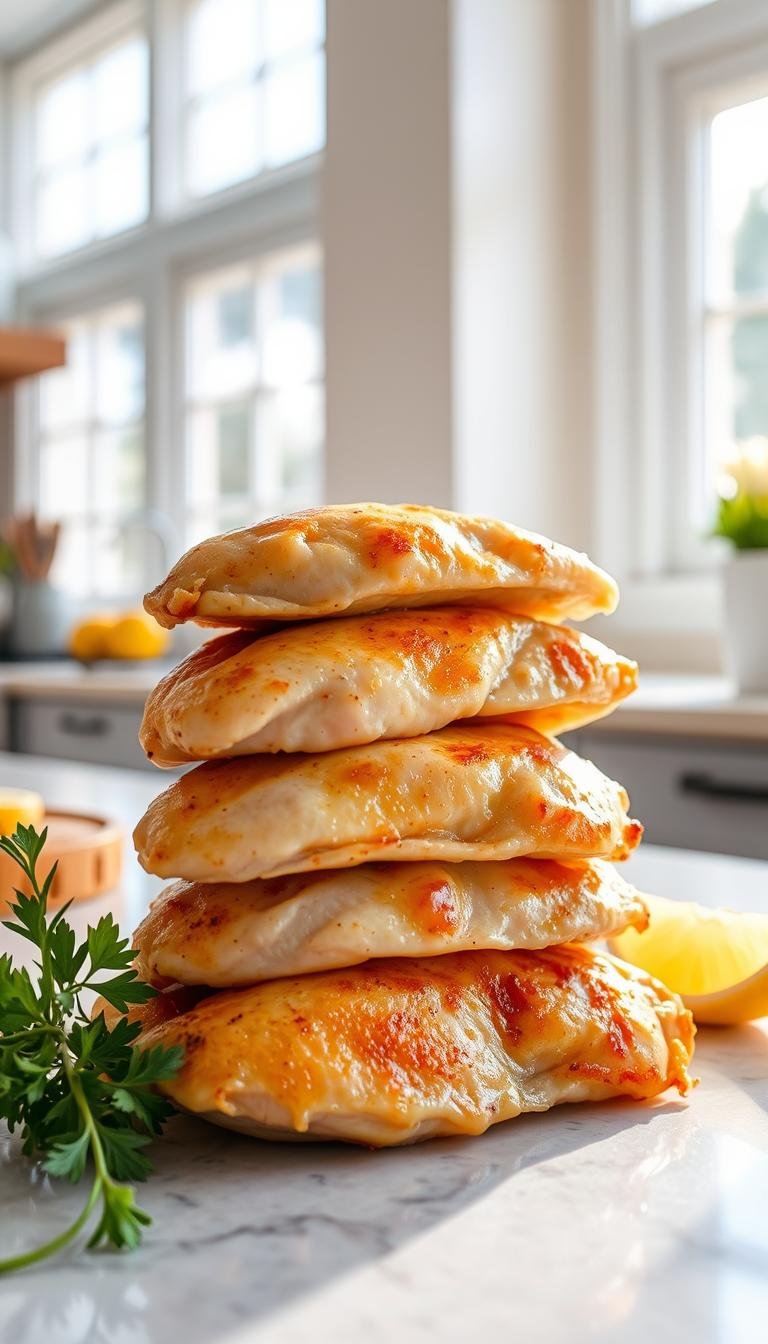Easy Marinated Grilled Chicken Recipes for Dinner
Surprising stat: Nearly 70% of home cooks say a quick, reliable dinner wins weeknights—and a simple marinade can cut guesswork and boost flavor fast.
This guide gives a fast, dependable plan for juicy, well-seasoned results. The framework uses extra virgin olive oil to lock in moisture and brown sugar to help caramelize while cooking.
Why it works: Low-sodium soy and Worcestershire add savory depth, balsamic and lemon bring brightness, and Dijon helps the sauce cling to meat. Prep takes about five minutes, then let the mix rest at least 30 minutes—four to six hours is ideal.
Timing and safety: Grill or sear to 165°F and rest five minutes. You can also bake at 400°F for 18–22 minutes or finish at 450°F for a slightly faster bake. Reserve a half cup of marinade for basting or boil it first if you reuse it as sauce.
Key Takeaways
- Prep is quick—about 5 minutes; marinate 30 minutes to 24 hours (4–6 hours ideal).
- Olive oil, soy, balsamic, lemon, mustard, and sugar deliver balanced flavor and moisture.
- Works for breasts, thighs, and drumsticks and suits grill, oven, or stovetop methods.
- Cook to 165°F and rest to keep juices; boil reserved marinade before reusing.
- Yields roughly 3–4 pounds or six large breasts—pantry staples make it weeknight-friendly.
Why These Marinated Grilled Chicken Recipes Work for Busy Weeknights
Weeknight dinners get easier when a quick toss-and-chill method delivers full flavor with minimal fuss. This approach saves active time and keeps results consistent across breasts, thighs, or tenders.
Fast prep, big flavor: the dinner formula
Whisk pantry staples in a bowl for a few minutes, then pour the mix into a resealable bag with the chicken and chill. Prep takes only a few minutes, so you can start sides while the meat rests.
Quick tip: Even 30 minutes improves taste; 4–6 hours is the sweet spot for weeknight planning.
Balanced marinade elements for consistent results
Effective blends pair fat like olive oil with salt (soy or Worcestershire), acid (vinegar or lemon), and aromatics such as garlic, mustard, or parsley.
This balance lets fat lock in moisture, salt season deeply, and acid gently tenderize while aromatics add layers of flavor. Flip the bag once or twice to spread the mix without extra dishes.
- Food safety: Always refrigerate while marinating — make sure you never leave raw meat on the counter.
- Use the same marinade for baking or stovetop if weather or equipment keeps you from the grill.
- A quick sear over high heat locks juices and creates caramelized, savory notes.
Essential Marinade Ingredients: Fat, Acid, Salt, and Flavor
Focus on four building blocks—fat, acid, salt, and flavor—to make reliable weeknight marinades.
Core pantry staples
Fat: Use extra virgin olive oil as the base. It coats the protein to prevent drying and helps fat‑soluble flavors cling for better browning.
Salt and umami
Soy sauce (low sodium) and Worcestershire add depth and savory punch. These season deeply and stand up to high heat when you cook the chicken.
Vinegar and bright notes
Choose balsamic for sweet depth or red wine vinegar for a brighter bite. Fresh lemon juice adds clean acidity, aroma, and mild tenderizing power.
Mustard and sweetness
Mustard (Dijon or yellow) emulsifies the mix so oil and water stay combined. Brown sugar caramelizes nicely; use honey when you want a glossy, lighter sweetness.
Herbs and aromatics
Dried rosemary and parsley add herbaceous notes. Add a pinch of pepper and salt to taste. Use garlic powder for high‑heat cooking to avoid burnt bits; save minced garlic for oven or stovetop.
Practical ratios
Try roughly 1/2 cup olive oil, 1/2 cup vinegar, 1/4 cup soy, and 1/4 cup Worcestershire with 1–2 tablespoons mustard, 1–2 teaspoons dried herbs, and 1–2 teaspoons garlic. Scale up per additional breasts and let rest a few hours for best results.
The Science of a Great Grilled Chicken Marinade
Understanding how acids, oils, and umami work together helps you craft a reliable marinade that performs on the grill.
How acids tenderize while oil locks in moisture
Acids like lemon and vinegar gently denature proteins at the surface. This loosens bonds and improves tenderness without long cooking times.
Use moderation: highly acidic mixes can turn the exterior chalky if left too long. Aim for 4–6 hours for most cuts.
Umami boosters that deepen flavor on the grill
Soy sauce and Worcestershire add glutamates and nucleotides that make meat taste richer and more “meaty.” Salt from these ingredients also helps retain juice during cooking.
Garlic and mustard boost aroma and help emulsify oil and watery components so flavor spreads evenly.
“Balanced marinades brown better and smell more aromatic thanks to good Maillard reactions.”
- Oil forms a thin barrier to reduce evaporative moisture loss and aids even heat transfer for browning.
- Oil-soluble herbs, like rosemary, extract fuller herbal notes in an oil base.
- Control grill heat to caramelize sugars without burning aromatics.
Taste and adjust the mix before adding chicken to ensure acidity and salt are dialed in. Small tweaks now save texture and boost final flavor.
Step-by-Step: Make the Chicken Marinade in Minutes
A quick whisk and a sealed bag turn pantry staples into a fast, reliable flavor boost. Use this simple workflow to cut prep time and avoid a sink full of dishes.
Whisk-and-bag method for minimal cleanup
Combine ingredients in a bowl or add them straight to a resealable bag for less mess. Whisk until the mix emulsifies, or seal and shake the bag for a few minutes.
- Add the chicken, press out extra air, seal, and massage to coat every surface.
- Reserve about 1/3 to 1/2 cup of the marinade in a separate cup before the meat goes in.
- Label the bag if you prep ahead and place it on a tray in the fridge to catch drips.
Reserving marinade safely for basting
Marinate at least 30 minutes and up to 24 hours; 4–6 hours is ideal for deeper flavor without texture trouble. Flip the bag once or twice while it rests so all sides absorb the mix.
When ready to cook, let excess drip off and pat lightly to encourage a good sear on the grilled chicken or pan. Baste with the reserved clean portion early in the time on the grill, or boil any raw-contact marinade 1–2 minutes to turn it into a safe finishing sauce.
- Discard the used bag after handling to keep things safe and simple.
- Keep a thermometer handy so you can make sure the meat reaches the right doneness without guessing.
Grilling Instructions: From Preheat to Perfect Sear
Start by setting the grill to a steady, even heat so searing is fast and predictable. Preheat to about 375–450°F and avoid exceeding 450°F to prevent dry, overcooked meat.
Clean and oil grates for nonstick, even searing
Scrape grates clean, then use tongs and an oil‑drenched paper towel to wipe the bars. This simple step promotes beautiful sear marks and easy release.
Medium-high cues and target temperatures
Use medium-high heat for most pieces. Grill 4–6 minutes per side depending on thickness and placement on the grate.
Aim to remove at about 160°F; carryover will bring the internal temp to 165°F while the meat rests.
Baste, flip, and rest: the sequence for juicy results
Baste once or twice with the reserved clean marinade during cooking to boost flavor safely. Flip only once for the best crust and avoid pressing down, which squeezes out juices.
For thick chicken breasts, pound or halve pieces so they cook evenly in the stated minutes. Tent with foil and let rest 5–10 minutes so juices redistribute.
| Cut | Approx. Thickness | Grill Time per Side |
|---|---|---|
| Thin breasts/tenders | 1/2 inch | 3–4 minutes |
| Standard breasts | 3/4–1 inch | 4–6 minutes |
| Bone-in thighs | 1–1.5 inches | 6–8 minutes |
| Thicker breasts (pounded/halved) | Even thickness | 4–6 minutes |
- Preheat to medium-high (375–450°F) and clean/oil grates.
- Space pieces for airflow and grill per time table.
- Handle flare-ups by moving to a cooler zone, then finish on direct heat.
“A brief rest after searing locks moisture and makes slicing neater.”
Alternative Cooking Methods (Oven and Stovetop)
Oven baking and a hot skillet give consistent texture when weather or time rules out the grill.
Baked chicken: temperatures, times, and when to flip
For even cooking, set the oven to 400°F and plan about 18–22 minutes depending on thickness. For a faster finish, bake at 450°F for 15–18 minutes and flip halfway to brown both sides.
Use a parchment-lined sheet pan or a wire rack over a tray to promote airflow and crisper edges. Halve or pound chicken breasts to an even thickness so pieces cook within the time window.
Stovetop and grill pan: sauté, drain marinade, and sear
Preheat a skillet or grill pan over medium-high heat with 1 tablespoon of oil. Drain excess marinade first so the meat sears instead of steams.
Sauté about 4–6 minutes per side until the thickest part reaches 165°F. Keep the pan uncrowded and let a hot surface form a proper crust.
- Brush with reserved clean marinade or finish with a quick lemon-butter-honey sauce in the last minutes for extra flavor.
- Let cooked pieces rest briefly before slicing to retain juices.
| Method | Temp | Typical Time | Key Tip |
|---|---|---|---|
| Oven (crispy edges) | 400–450°F | 15–22 minutes | Use rack or flip at 450°F |
| Stovetop / Grill pan | Medium-high heat | 4–6 minutes per side | Drain marinade; use 1 tbsp oil |
| Finish option | n/a | Last 1–2 minutes | Brush reserved sauce or lemon-butter-honey |
Marinating Time, Thickness, and Internal Temperature
Short soaks and even cuts help you get consistent, juicy results every time.
Plan for about 4–6 hours for most marinades to balance flavor and texture. If you are pressed for time, even 30 minutes improves surface seasoning and browning.
Caution: very acidic mixes can begin to break down the surface if left too long. Avoid extreme acid contact beyond about 6–24 hours depending on the formula to prevent mushy edges.
- Pound or halve chicken breasts so pieces cook evenly in the stated minutes.
- Thighs are more forgiving and tolerate wider soak windows, making them great for new cooks.
- Flip the bag midway through marinating to spread seasoning across varied thicknesses.
Cook to a final target of 165°F in the thickest part; remove slightly earlier if you expect carryover cooking. Keep a thermometer handy and let chicken rest briefly off heat so juices redistribute.
Finish with a light sprinkle of salt and a crack of pepper after slicing if needed. Remember: thickness determines exact time, so verify doneness by temp—not by guesswork.
Pro Tips to Maximize Flavor and Texture
A few targeted moves in prep and handling make your results more consistent and juicy. These steps help the marinade reach deeper, speed up even cooking, and protect texture while you cook.
Pound or slice for even thickness
Pound or slice breasts so each piece is the same thickness. That prevents thin edges from drying while centers finish.
Score for deeper penetration
Lightly score or prick surfaces to let flavors move past the exterior. This helps the marinade soak in during the resting hours.
Handle and refrigerate safely
Flip the bag halfway through marinating so every surface gets contact. Always refrigerate while the protein soaks—make sure raw chicken never sits at room temperature.
- Pat pieces dry before cooking to promote browning, then baste with reserved clean marinade as you cook.
- Oil clean grill grates and preheat well to prevent sticking and tearing.
- Use a digital thermometer to confirm doneness and rest cooked meat 5–10 minutes before slicing.
- For thighs, rely on their extra fat for a wider doneness window and forgiving results.
“Small prep moves often give the biggest payoff at the table.”
Food Safety Essentials You Must Follow
Keep safe handling front of mind so flavor doesn’t come at the cost of health. A few clear steps protect you from cross-contamination and foodborne illness.
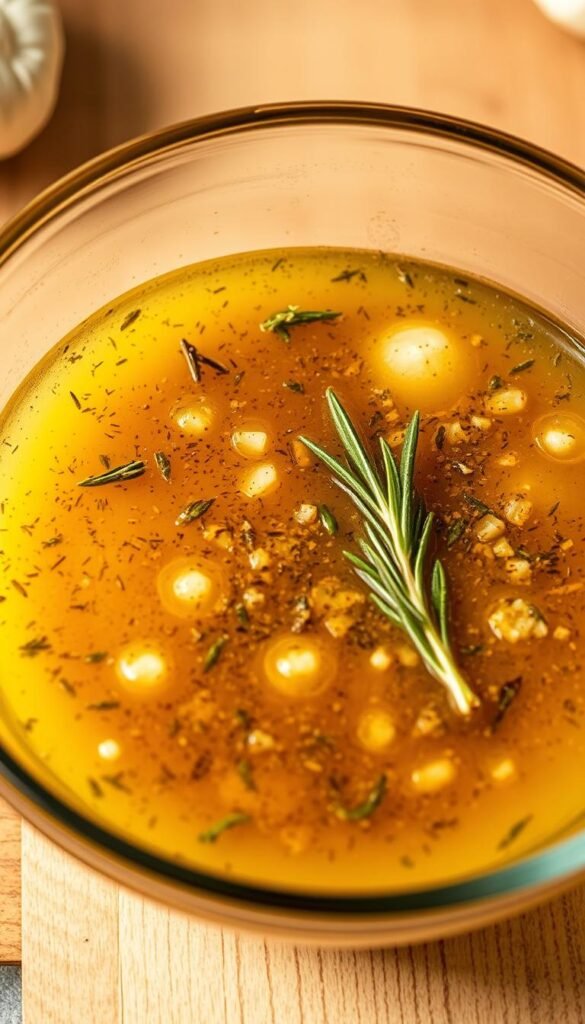
Don’t reuse raw marinade — when and how to boil safely
Once the marinade touches raw chicken, treat that liquid as contaminated. Never reuse it unless you boil it vigorously for 1–2 minutes to turn it into a safe sauce.
Better yet, reserve a clean portion before adding meat so you can baste without risk.
Target 165°F and trust carryover heat
Cook to an internal target of 165°F in the thickest part to kill bacteria. For a juicier result, remove the meat just shy of that temp — carryover will finish it while it rests.
Let chicken rest 5–10 minutes before slicing to stabilize juices and improve texture.
- Keep meat refrigerated while soaking; never leave it at room temperature.
- Use separate plates and tongs for raw and cooked items to avoid cross‑contamination.
- Limit basting in the final minutes unless the sauce is clean or has been boiled.
- Sanitize surfaces and wash hands after handling raw marinade and chicken; when in doubt, discard questionable sauces.
“Simple precautions — a clean reserve, a quick boil, and a thermometer — make safe meals stress-free.”
Marinated Grilled Chicken Recipes: Flavor Variations to Try
Use bold anchors—balsamic, honey-lemon, and soy-garlic—to create distinct plates from one base plan.
Balsamic‑herb classic
Blend olive oil, balsamic vinegar, Dijon mustard, dried rosemary, a splash of soy and Worcestershire, lemon juice, and a touch of brown sugar.
This mix gives a savory‑sweet, aromatic finish that browns well on the grill.
Honey‑lemon zing
Whisk oil with lemon zest and juice, soy, Worcestershire, chopped parsley, mustard, minced garlic, and honey.
Serve with an optional lemon‑butter‑honey sauce for a glossy, bright finish.
Soy‑garlic savoriness
For kabobs or tenderloins, whisk olive oil, soy sauce, lemon juice, mustard, Worcestershire, minced garlic, and black pepper.
Soak wooden skewers at least 30 minutes to prevent scorching.
- Choose breasts for lean slices, thighs for extra juiciness, and tenderloins for quick skewers.
- Consider a reduced, boiled reserved sauce or a lemon‑butter drizzle to finish.
- Adjust mustard, sugar, or soy to push profiles sweeter or more savory as desired.
Serving Ideas, Sides, and Sauces
A few smart sides and a quick sauce lift this main into a balanced weeknight meal.
Fresh sides that contrast texture
Plate grilled chicken with crisp options like fruit salad, creamy cucumber salad, or classic coleslaw for a cool contrast.
Add toasted nuts or seeds and a pinch of flaky salt to boost texture.
Build bowls, salads, and wraps
Layer rice or quinoa with roasted vegetables and herbs for bowls.
Slice leftover protein across the grain for salads, or stuff wraps with cooled slices, crunchy veggies, and a tangy dressing.
Quick finishing sauces
Whisk a lemon-butter-honey sauce with a splash of olive oil in minutes for a bright finish.
Reduce the reserved clean marinade in a small pan for a concentrated sauce; if the marinade touched raw meat, boil it for several minutes first.
| Serving Style | Suggested Side | Finishing Sauce |
|---|---|---|
| Family plate | Coleslaw or creamy cucumber salad | Lemon-butter-honey |
| Bowl | Quinoa, roasted veg, herbs | Reduced reserved marinade (boiled if needed) |
| Salad | Greens, tomatoes, cucumbers | Simple vinaigrette or ranch-cilantro |
Tip:Rest the meat before slicing so juices stay in the slices and flavor stays bright.
Storage, Reheating, and Freezer Prep
Smart storage extends freshness and lets you grab dinner in minutes on busy nights. Follow clear timelines and simple thawing steps to keep texture and flavor intact.
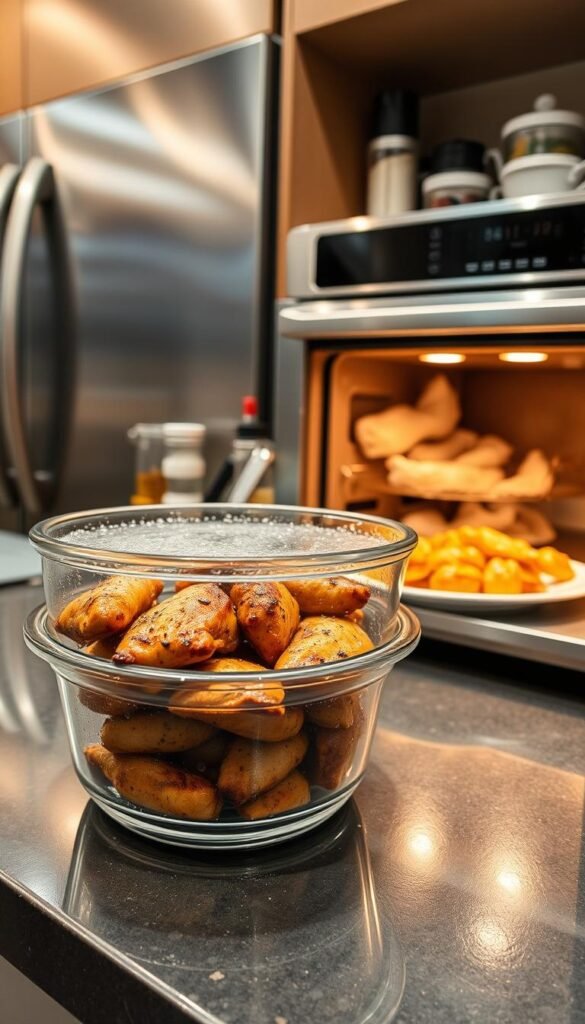
Fridge and freezer timelines
Refrigerate raw, marinated chicken and cook within about 24 hours to avoid over‑tenderizing in acidic blends.
Freeze raw packs flat in a labeled bag for up to 6 months. Thaw overnight in the fridge before using on the grill or in the oven.
Thawing and reheating best practices
Store cooked pieces in airtight containers for 3–4 days in the fridge or freeze up to 3 months. Reheat gently to 165°F in a covered skillet over low heat with a teaspoon of oil or a splash of broth to keep moisture.
Use the microwave in short bursts, flip pieces, and let them rest a minute before serving for even heat.
| Item | Fridge | Freezer |
|---|---|---|
| Raw, in bag | Use within 24 hours | Up to 6 months (flat) |
| Cooked, sealed | 3–4 days | Up to 3 months |
| Batch prep tip | Marinate enough for 3–4 pounds | Freeze flat for easy stacking |
Conclusion
Conclusion
Master a few ratios and a thermometer, and you’ll get juicy, flavorful results every time.
Recap the formula: a balanced grilled chicken marinade with oil, soy, vinegar, lemon, mustard, garlic, and herbs, plus correct heat and timing, makes the difference in minutes.
Keep it simple: a quick chicken marinade streamlines dinner and boosts flavor with little prep. Use the variations and sides here to keep meals fresh all week.
Safety first: always marinate in the fridge, cook to 165°F, and let meat rest 5–10 minutes for tender protein. Prep for a few minutes, then enjoy reliably great results.
Use this guide as your go‑to for the best grilled chicken any night of the week.
